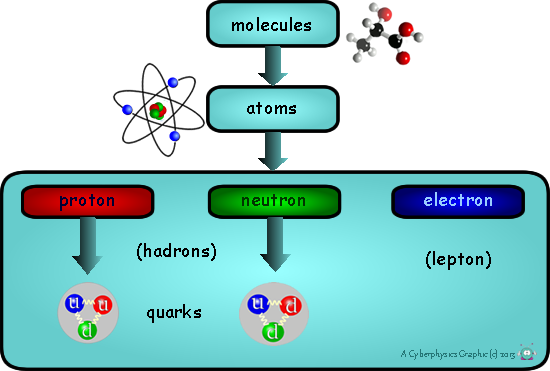    |
||||

The Particle Theory- a model to help us understand the behaviour of matter |
||||
|
The
material world is made up of matter. Matter
is anything which occupies space - there are three states of matter:
solid, liquid and gas. A particle is a 'tiny part' - it is the smallest part of the whole you can have with it still being the same substance. If you took a lump of something and cut it in half again and agin until you were left with something that you couldn't divide any more - that would be indivisible - and you would have a particle of that substance
In physics we them break atoms down even further, into leptons and hadrons (which contain quarks).... but that is the realm of particle physics - you will study that at A level! Up to KS4 (Y11) level we only look at the atoms and molecules as particles. We totally ignore Chemistry - which looks into the fact that all atoms are not the same but that there is a whole periodic table of them! Instead we look at the 'big picture' of particle behaviour and consider them to all be and behave the same! Now look at how the particles behave in each of the three main states of matter.
|
||||
 |
||||



